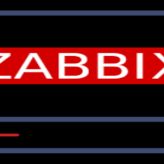

TOP 10 ITIL Training Questions
17. 6. 2019
Come to the ITIL Training to EDU Trainings.
ITIL is used by millions of professionals around the world. Companies are based on ITIL. Organizations annually invest heavily in adopting and adapting ITIL to their business processes and upgrading their staff to ITIL qualifications.
We have completed several ITIL 4 Foundation trainings. We asked lecturers Ludmila Vráželová what the ITIL participants most often ask about.
There are a lot of questions, we’ve chosen the top 10 most popular for you:
- The ITIL 3 structure was based on the service lifecycle of Service Strategy, Service Design, Service Transition, etc. How ITIL 4 is newly structured?
- What happened to processes in the new version of ITIL 4?
- What are the main differences between ITIL 3 and ITIL 4?
- What does the Service Value Chain mean and how to use it?
- How to handle incidents? How is the “swarming” technique used to deal with incidents?
- How to measure service availability?
- How the Service Desk works and what is the difference between Service Desk and Help Desk?
- How do SLAs work?
- How to avoid unnecessary work and bureaucracy of your Service Management by using value stream mapping?
- How to manage suppliers?
Answers are below and if you are interested in other answers, we would like you to a ITIL training at EDU Trainings.
- The ITILv3 structure was based on the service lifecycle of Service Strategy, Service Design, Service Transition, etc. How ITILv4 is newly structured?
Newly, the ITIL 4 delivery of IT services to business is described as the Service Value System. Service Value System is the entire system that has following components:
Principles – certain “rules” how to deliver services (for example, iteratively);
Governance;
Practices – such as processes and functions;
Continuous Improvement and
Service Value Chain – a service life cycle equivalent.
- What happened to processes in the new version of ITIL 4?
Processes are still in use. They are “hidden” under the more general name “Practices”.
- What are the main differences between ITIL 3 and ITIL 4?
ITILv4 has a different structure. The Service Value System and the Service Value Chain have replaced the service lifecycle. ITILv4 includes some new concepts, such as value stream mapping. Qualification scheme changed – ITIL Foundation is followed by ITIL Managing Professional and ITIL Strategic Leader.
- What does the Service Value Chain mean and how to use it?
Service Value Chain (SVCH) is similar to the service lifecycle – the original Service Strategy, Service Design, Service Transition, Service Operations, and CSI. SVCH has 6 components: Engage, Plan, Design & Transition, Obtain & Build, Deliver & Support and Improve. Unlike the original service lifecycle, which was presented and used predominantly sequentially – first Service Strategy, then Service Design, etc., SVCH components run in a different order, repeatedly, depending on the task to be performed by IT.
Each of the SVCH components is implemented by Practices, which are, among other things, processes. Thus, for example, Deliver & Support is implemented through, for example, the well-known Incident Management.
- How to handle incidents? How is the “swarming” technique used to deal with incidents?
The Incident Management process, like most of the original ITIL 3 processes, is still available in version 4. Processes are modified and “modernized”. For example, Incident Management is complemented by the “swarming” technique, a term known from agile management. It is a way of dealing with an incident where other team members’ work is interrupted, and they all work together to deal with the incident until it is resolved. Swarming is a state or a situation where all team or department members solve the incident together.
We will be happy to advise you on selecting the ITIL training that is most appropriate for you or your company. Please contact us: edu@edutrainings.cz
We look forward to seeing you at EDU Trainings!


